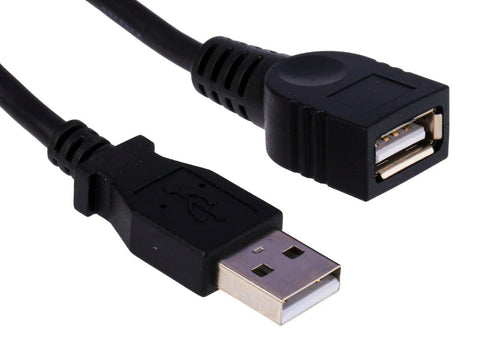
How to choose a USB extension cable
Share
When it comes to connecting devices, a USB extension cable is an essential accessory. These cables allow you to extend the reach of a USB cable, allowing you to connect devices that are farther away from the computer or power source. With so many options on the market, however, it can be difficult to know which USB extension cable to choose. This essay will explore some of the key factors to consider when selecting a USB extension cable.
The first factor to consider is the length of the cable. USB extension cables come in a variety of lengths, from a few feet to over 100 feet. It's important to choose a cable that is the right length for your needs. If you need to connect devices that are close to each other, then a shorter cable will suffice. However, if you need to connect devices that are farther apart, then a longer cable will be necessary.
Another important factor to consider is the type of USB ports. There are two main types of USB ports: USB-A and USB-C. USB-A is the standard USB port that has been around for many years and is compatible with most devices. USB-C is a newer type of port that is becoming more popular, especially with newer devices. If you have newer devices that use USB-C, then it is important to choose a cable that has a USB-C connector.

Speed: The next factor to consider is the cable's data transfer rate. USB extension cables come with different data transfer rates, such as USB 2.0, USB 3.0, and USB 3.1. The higher the data transfer rate, the faster the data transfer. If you need to transfer large amounts of data quickly, then a cable with a high data transfer rate is necessary.
The USB standard has evolved over time, with different versions offering different speeds and capabilities. Here is a brief overview of the main USB speeds:
USB 1.1: This is the first version of the USB standard, introduced in 1998. It has a maximum data transfer rate of 12 Mbps (megabits per second). USB 1.1 is considered to be slow by today's standards and is rarely used.
USB 2.0: This version of the USB standard was introduced in 2000 and is still widely used today. It has a maximum data transfer rate of 480 Mbps, which is 40 times faster than USB 1.1. USB 2.0 is backwards compatible with USB 1.1, which means that USB 2.0 devices can be connected to USB 1.1 ports and vice versa.
USB 3.0: Also known as SuperSpeed USB, this version of the USB standard was introduced in 2008. It has a maximum data transfer rate of 5 Gbps (gigabits per second), which is 10 times faster than USB 2.0. USB 3.0 is backwards compatible with USB 2.0, which means that USB 3.0 devices can be connected to USB 2.0 ports and vice versa. However, when connected to a USB 2.0 port, the device will only be able to transfer data at USB 2.0 speeds.
USB 3.1: This version of the USB standard was introduced in 2013 and has two different data transfer rates: USB 3.1 Gen 1 has a data transfer rate of 5 Gbps (same as USB 3.0), and USB 3.1 Gen 2.

Shielding: Another important factor to consider is the cable's shielding and material. USB extension cables with foil or braided shielding can help protect against electromagnetic interference, which can affect the signal quality and cause data errors. The material of the cable should be durable, flexible and resistant to wear and tear.
Active VS Passive USB cables. Active and passive USB extension cables are both used to extend the length of a USB cable, but they work in slightly different ways.
Passive USB extension cables simply extend the length of the cable by adding additional wire. They do not have any active components and simply rely on the USB signal to be strong enough to reach the end of the cable. These cables typically come in a variety of lengths, and work well for short to medium length extensions.
Active USB extension cables, on the other hand, have active components built into them, such as signal amplifiers and repeaters, which help to boost the USB signal and maintain signal integrity over longer distances. These cables are typically used for longer runs, and are often used in situations where the device you are trying to connect is located far away from the USB port.
It's important to note that active USB extension cables are more expensive than passive cables, and also may require an additional power source to work.
In summary, passive USB extension cables are simple and cheap and work well for short to medium length extensions. Active USB extension cables are more expensive and require power but they also have active components that boost the USB signal and maintain signal integrity over longer distances.
Finally, you should also consider the price and brand of the cable. There are many different brands of USB extension cables, and the price can vary greatly. It's important to find a cable that is within your budget, but also from a reputable brand to ensure the quality of the product.
In conclusion, when choosing a USB extension cable, it is important to consider the length, type of ports, data transfer rate, shielding, material, the price, and the brand. By taking these factors into account, you can ensure that you choose a cable that is appropriate for your needs and budget. It's also important to make sure the cable you choose is compliant with all relevant standards, such as USB-IF, and has a good warranty. This will ensure that you're getting a product that is safe and reliable.